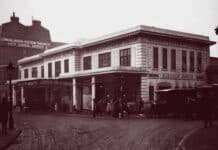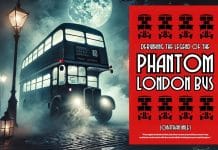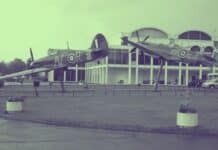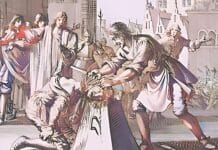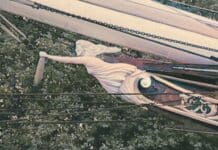In the 19th century, demand for bodies in medical studies led to grave robbing, murder, and new laws. DAVID TURNBULL explores the infamous Resurrection Men and London Burkers behind this grim trade.
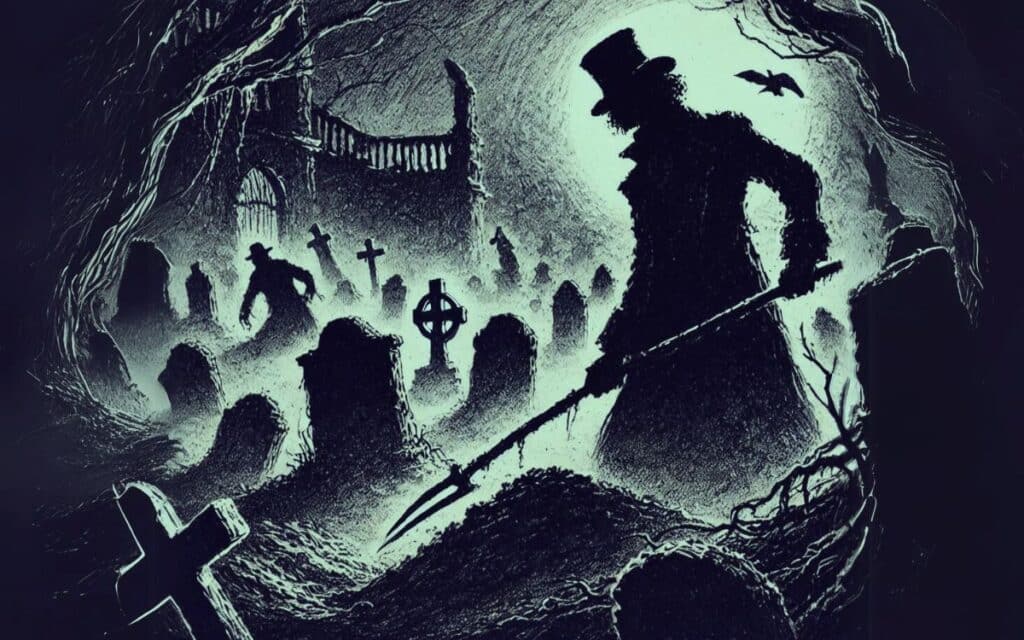
In the early 19th century surgeons and their students had insatiable appetite for fresh corpses. The cadavers were needed for anatomical study, and the bodies of felons hung for murder, rape or violent robbery could be legitimately purchased from the prison authorities. This trade in corpses was particularly prevalent in Edinburgh and London where the main medical schools of the time were situated. Gruesome displays of vivisection for anatomical purposes became as much a spectator event as hangings and public execution.
The demand however rapidly outstripped the supply. In the 18th Century thousands of criminals were executed each year under a series of laws linked to sentence of death which became collectively known as the Bloody Code. But by the early 19th Century, with legislative reforms, this had dwindled to a few hundred per annum. In this climate the practice of grave robbing began to flourish.
So long as no actual property was stolen, it was considered a minor offence to disturb a grave and remove corpse, punishable by a fine, a custodial sentence, or in some cases transportation to a penal colony. For many the money to be made from the sale of corpses by far outweighed the risk. The appetite for a supply of cadavers was such that surgeons rarely asked questions.
For the purposes of anatomical study, the corpses needed to be as fresh as possible, so the grave robbers had to move quickly after a burial. One method, to avoid digging up an entire grave, was to sink a wide borehole a foot or so away from the mound and then tunnel into the end of the coffin where the cold corpse could be liberated and dragged out by the feet.
Relatives became so concerned by these practices that they would use metal coffins or iron grids to protect their loved ones. Hired guards would regularly stand watch over graves for the first few nights. Many cemeteries had watch houses and night watch men.
In February 1814, an alarm was raised in Streatham in south London where a gang of robbers was attempting to steal a freshly interred corpse from a grave to the side of St. Leonard’s church. After their apprehension iron railings, accompanied by a sentry box, were installed around the church yard.
Another grave robbing gang which operated in south London were the Borough Gang whose members included a former porter from St Thomas’ Hospital in Waterloo and a former grave digger at Spa Fields in Clerkenwell. One of the gang kept a diary and an entry from 1812 records a haul consisting of the bodies of thirteen adults and two children in a single night. A very lucrative night’s work for the robbers and an abundant supply for the medical fraternity.
Grave robbing, however, inevitably gave way to murder. Killing someone to sell their corpse was a good way to ensure a fresh cadaver, while avoiding the back breaking work of digging down into a grave. In Edinburgh, Burke and Hare gained infamy when they were arrested and charged with the murder in 1828 of sixteen individuals in the city’s murky backstreets.
Who were the Resurrection Men?
Known as the ‘Resurrection Men’ the pair had sold the corpses of their recently murdered victims to the eminent surgeon, Robert Knox, for use in his anatomy lectures. Knox escaped conviction by pleading ignorance of the origins of corpses. However, with his reputation in ruins he was forced to leave Edinburgh and exile himself to London. When he died in 1862 his remains were transported from Waterloo to Brookwood Cemetery in Surrey on the Necropolis Railway. His plot was one of the few in the cemetery to be covered in concrete. Clearly, his family was taking no chances.
His story, and that of Burke and Hare, inspired fellow Edinburgh citizen, Robert Louis Stevenson, to write his story The Body Snatcher, which appeared in the Pall Mall Gazette in 1884. A year later Stephenson would publish his horror classic The Strange Case of Doctor Jekyll and Mister Hyde. Jekyll’s house, with it two doors at opposite sides and its laboratory at its centre, was based on the actual house in London’s Leicester Square owned by surgeon and anatomist John Hunter who featured in my recent Spooky Isles article The Scottish Surgeon and the Irish Giant. Hunter was a prolific procurer of corpses, as was his older brother and fellow surgeon, William.
Like his sibling, William Hunter had a home, anatomy theatre / medical museum in London’s West End. To the back of the Lyric Theatre in Soho’s Great Windmill Street a blue plaque originally dedicated by the London County Council reads simply ‘This was the home of Dr. William Hunter – Anatomist – 1718 -1783’.
After his death the location continued to function as a Theatre of Anatomy and it was here, on the 5th of December 1831 that the corpse of a murderer, Thomas Williams, executed at Newgate before a crowd of 30,000, was received from the prison authorities for anatomical dissection. Williams, along with his cohorts, John Bishop, Michael Shields, and James May, had been part of one of London’s most notorious gangs of grave robbers and murderers.
Why were they known as London Burkers?
Modelling themselves on Burke and Hare they became known as the London ‘Burkers’. However, their mode of operation was far more sophisticated and considerably more gruesome than Edinburgh’s ‘Resurrection Men’. Williams and Bishop rented a property in Shoreditch. They would lure unsuspecting travellers here with the promise of a room to rent.
Once at the property they would render them unconscious by aid of laudanum. They would then tie a rope around the limp ankle of their victim and hang them headfirst into well till they drowned. The fresh corpses would then be stripped naked and bagged up to be sold on to anatomy schools and hospitals such as St. Thomas’s with the assistance of the other gang members.
They were caught on the evening of 5 November 1831, when Bishop and May attempted to sell the fresh corpse of a 14-year-old boy drugged, drowned and murdered earlier that day. Having failed to sell it at Guys hospital near London Bridge they transported it back over the Thames to King’s College’s School of Anatomy on the Strand. It was here that concerns about the freshness of the corpse were aroused. Following an examination by one of the surgeons both men were arrested on suspicion of murder.
A police search of the rented property turned up discarded items of clothing, suggesting multiple murders had been committed there. In a bizarre twist the police then opened the property for public viewing and much of what may have these days been considered as ‘evidence’ was stolen away as morbid souvenirs.
The unfortunate boy’s body was wrongly identified as that of an Italian teenager who had gone missing. Bishop in his confession said the murdered boy was in fact from Lincolnshire. He’d been befriended in a pub near Smithfield meat markets and lured back to the property where he was drugged and drowned. Other confessions obtained from both Bishop and Williams revealed rough sleepers in the Shoreditch and Smithfield area had also been murdered by the same process and their bodies sold for profit.
Williams was hung at Newgate on the same day as Bishop. In his case the corpse was delivered for dissection to King’s College, the very place his cohorts has attempted to sell their murder victim.
May and Shields were both exonerated of actual participation in the murders and found to have only been involved in the delivery and illicit sale of the corpses. They were both given custodial sentences. May was transported to Van Damien’s Land (Tasmania). He died before his sentence was served and was buried in an unmarked grave in the convict cemetery near Port Arthur know as the Isle of the Dead.
Following the Burke and Hare case attempts had been made to regulate the sale of corpses through legislation. But a Bill presented to Parliament had been effectively blocked by vested interests in the House of Lords. The sensational case of the London ‘Burkers’, however, gave the notion fresh momentum, and the Anatomy Act 1834 consequently came into force.
The Act required any surgeon seeking to practice dissection on human corpses to acquire an official licence. Unclaimed corpses could then be legitimately sourced from hospitals, prisons, and the poor house.
The Act also contained a provision whereby a relative could donate the corpse of their next of kin in exchange for a subsequent burial of the remains at the expense of the anatomy school, something which would avoid the shame of a pauper’s funeral. However, the failure of the Act to protect the unclaimed bodies of paupers without their express consent prior to death led to a series of organised public protests which took place right through to the 1840s.
Today a parallel could be drawn with organ donation being allowed by consent, but with a huge trade in illegally obtained organs becoming a global phenomenon. Kidneys are the main organ that is harvested as people have two of these and illegally selling one of your own offers a way out of poverty to many people in poorer countries. The World Health Organisation estimates that 42% of kidneys used for transplants have been obtained illegally. There are persistent accusations of people trafficking and murder linked to the illicit trade in other more vital organs.
Charlie Chaplin and the Bodysnatchers
The most bizarre and high-profile case of modern-day body snatching came in 1978 when the body of film legend, Charlie Chaplin, was stolen from his grave in Switzerland. Chaplin had died on Christmas Day 1977 aged 88. On 1 March 1978, his grave near his home in the village of Corsier-sur-Vevey was found to have been dug up. Furrows where the coffin had been dragged away were found on the cemetery lawn.
His widow, Oona, subsequently received a ransom demand of $600,000 for the return of the corpse. The ransom was never paid. Monitoring subsequent calls to Oona the police identified these latter day ‘Burkers’ as two Eastern European political refugees, Roman Wardas and Gantscho Gardas. On arrest both men confessed and led the authorities to the location where they had temporarily buried Chaplin’s remains in the hope of receiving the ransom.
Wardas was sentenced to four and half years, and Gardas, as his accomplice, to 18 months. Once Chaplin was reburied back in the cemetery the family followed the footsteps of the family Doctor Robert Knox, having the plot concreted over as a precaution against the risk of future incidents.
The notion of surgeons and doctors engaged in gruesome practices behind the closed doors of laboratories or operating theatres provided the inspiration for many of the classic Victorian and Edwardian horror novels that came to define the genre.
Frankenstein, The Strange Case of Doctor Jekyll and Mister Hyde, The Island of Doctor Moreau and The Invisible Man, all cast driven men of science or medicine as characters whose practices and experiments take them on dark and dangerous journeys that have terrifying consequences. More recently the novel Poor Things by Alastair Grey, adapted for the big screen in the movie of the same name starring Emma Stone, has once again revisited this territory.
Tell us your thoughts about this article about Resurrection Men and London Burkers in the comments section below!
DAVID TURNBULL runs horror and dark history tours in London. Find out more in our interview with him on Spooky Isles!


